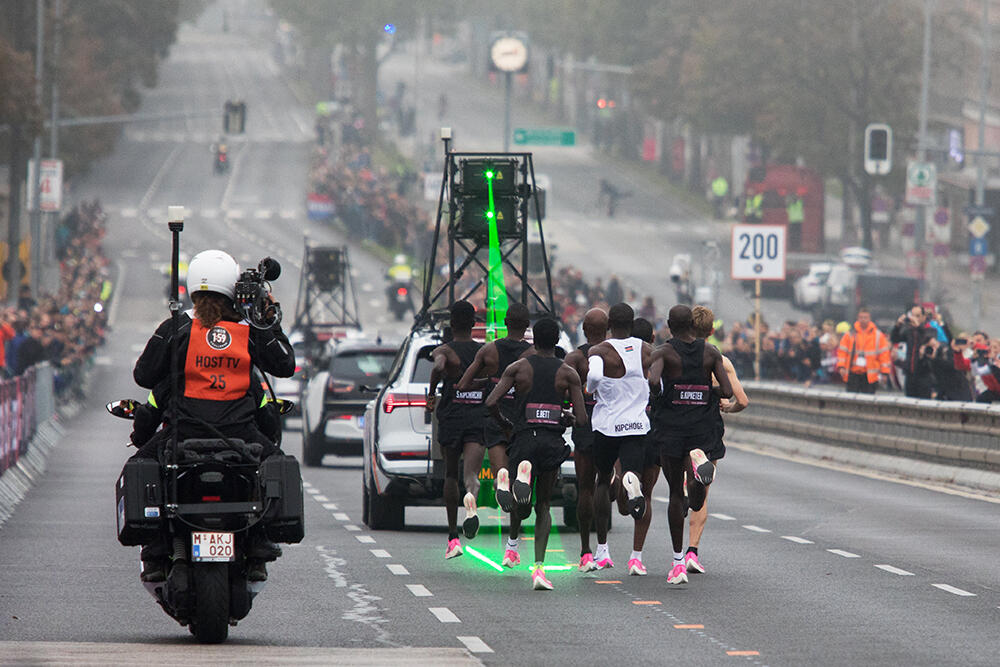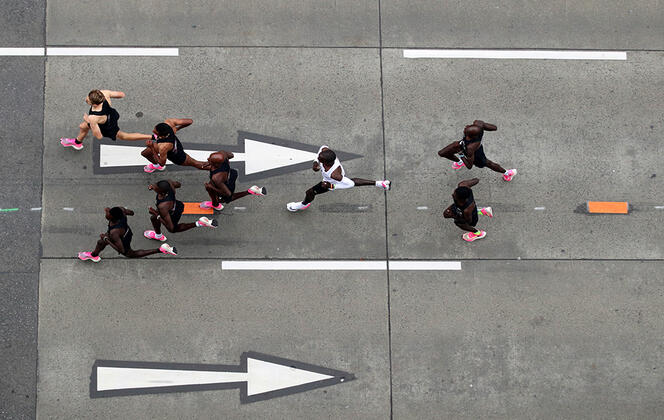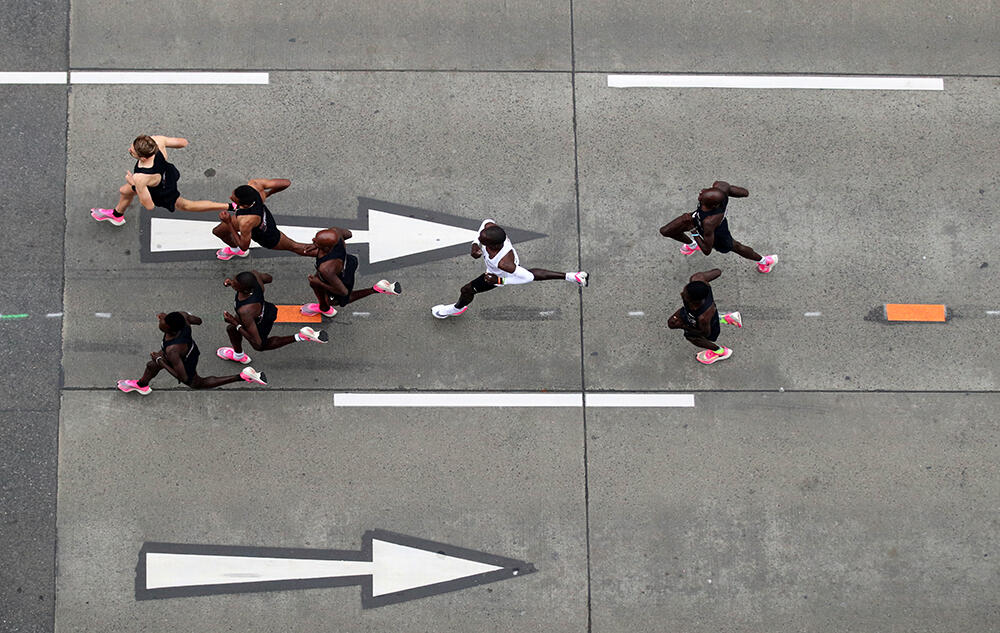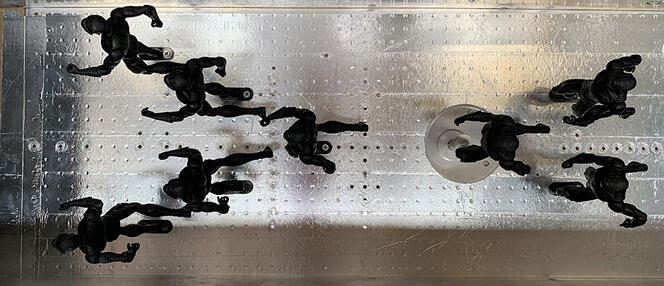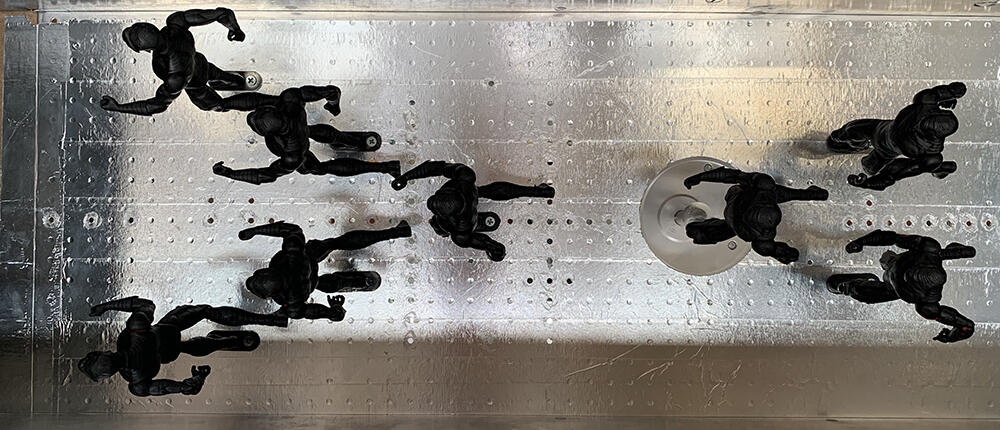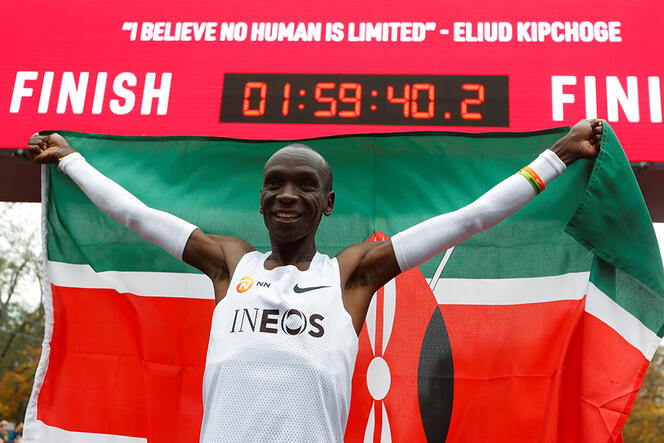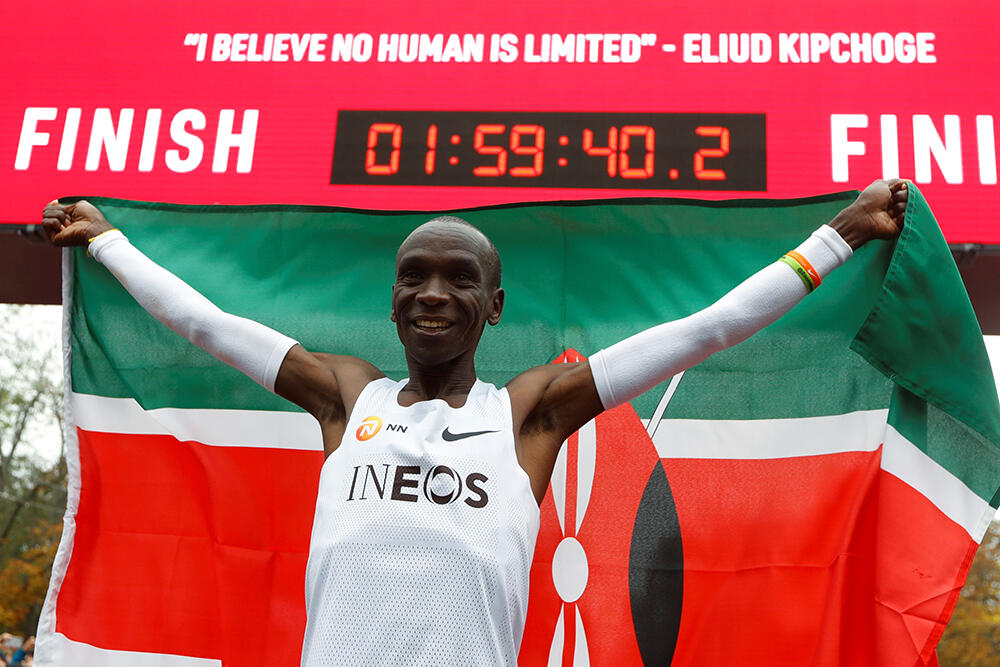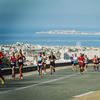You are here
Taming air resistance in marathons
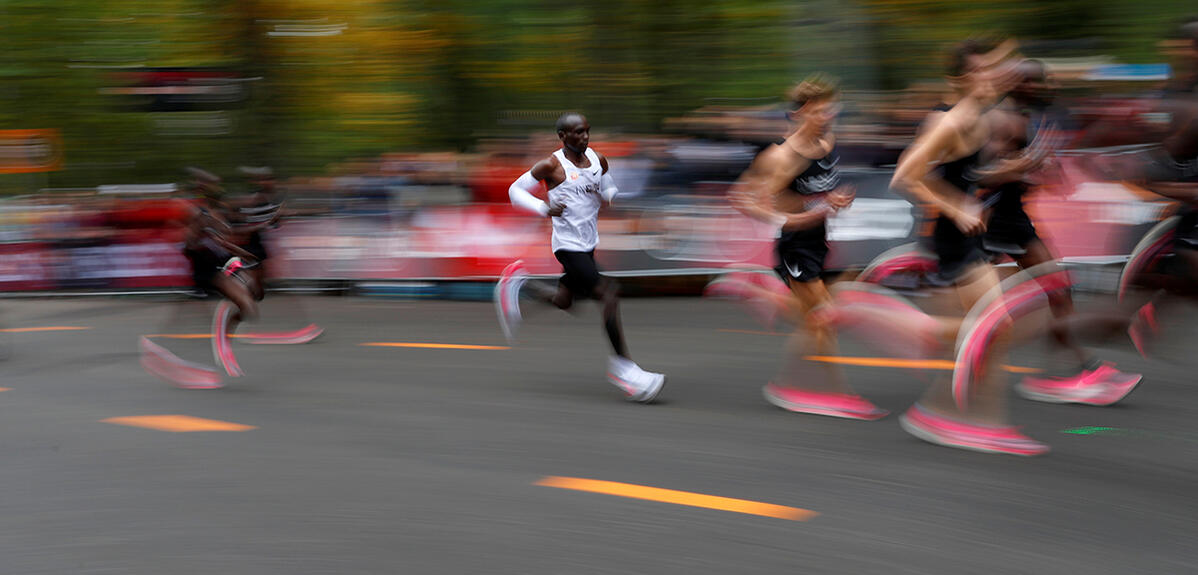
In May 2019, Eliud Kipchoge of Kenya ran the 42 kilometres of a marathon in 1 hour, 59 minutes, and 40 seconds. An athlete had never completed it in under two hours. The race, known as the INEOS 1:59 Challenge, was an unusual sporting demonstration. The two-time Olympic champion had no opponents, and certain arrangements were made to help him reach his maximum capacity. One of these was the use of “pacers” – seven athletes running in front of and behind him, taking turns every 5 kilometres – in order to set the pace and provide him with the drafting so familiar to cyclists.
Performance: the devil is in the details
“If you look at historical marathon results, you can see that we have reached a plateau,” points out Christophe Bailly, a researcher at the Fluid Mechanics and Acoustics Laboratory1. “What we are currently looking for are marginal gains, details that when added together can save time.” For example, for elite athletes all aspects of the race – ranging from training to lifestyle – are optimised to the point of obsession. Anything can help shave off seconds, including diet, sleep, training altitude, and the materials used in sporting equipment. Even one’s facial expression during the race or wearing sunglasses have been analysed by the teams behind the athletes.
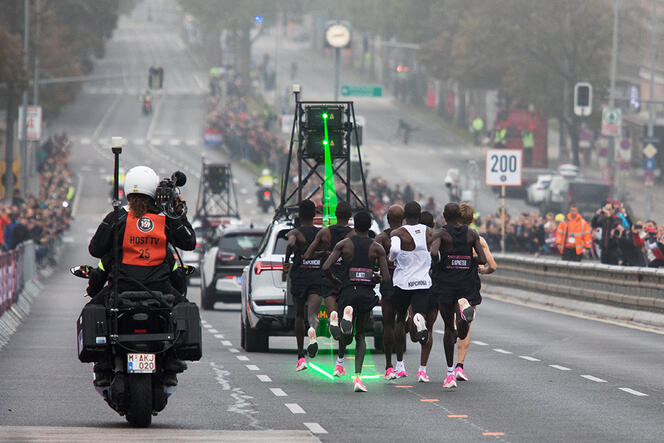
A potential factor for time saving is reducing drag force, namely the air resistance encountered by a runner. “When you place an obstacle to the flow of air around a runner, you create a disturbance in the pressure field, which leads to a small reduction in drag force,” Bailly explains. A runner following another thus enjoys a kind of pressure bubble that slightly reduces the effort they must expend to overcome air resistance. What is original about the INEOS 1:59 Challenge is that it used seven pacers with a view to maximising this advantage. Kipchoge’s teammates lined up in a clearly determined configuration, with five runners in front of him in the shape of an inverted arrow, and two behind, one on each side.
How did the race organisers decide on this arrangement? It is impossible to tell, as they have not communicated on the subject. With respect to scientific research, very few studies have taken an interest in air resistance in relation to running. Available results focus on simple configurations, with at most two runners moving forward one behind the other. For Bailly and his collaborators, this gap had to be addressed.
A novel experimental system
Studying a complex pattern such as that used in Kipchoge’s race presented challenges, namely the difficulty of implementing an experimental system involving real runners, as well as making measurements in real race conditions. To this end, Bailly and his colleagues devised an experiment using a wind tunnel – a sensor-equipped tunnel through which air flows – and 17-centimetre-tall figurines representing the athletes. The scientists expected to thus measure the advantage that pacers offer the runner.
The researchers were well aware of the limits of this experiment. For instance, in the wind tunnel the wind was blowing on the “runners”, and the figurines were static, which meant they could not reproduce the movement of an athlete’s arms and legs. This seemed quite different at first from the dynamics of a race. However, by comparing the measurements of the drag force from a wind tunnel on one or two figurines with the results obtained by other researchers in real conditions, the team noticed that their system offered an excellent approximation.
All they had to do was test all imaginable patterns, including the one used by Kipchoge. They found that the inverted arrow provided him with a 50% reduction in drag force, which translated into a time saving of 3 minutes and 33 seconds over 42 kilometres. In other words, the reorganisation of air flow and the drafting produced by “pacers” allowed him to dip below the two-hour mark.



Significant time savings
Yet that is not all. By modifying the position of the figurines, the scientists identified an even more favourable layout than the one used during the INEOS 1:59 Challenge. This “swordfish-shaped” arrangement, with five runners forming a sword pointing forward, enabled a 62% reduction in drag force. Had Kipchoge used it, he could have shaved an additional 49 seconds off of his time, which is far from negligible! These results were published in the journal Proceedings of the Royal Society A in August 20232.
The use of pacers is forbidden in official competitions, and so this research should not affect records. Yet for Bailly, who is an amateur runner, as well as for his colleagues, it does not really matter: “The marathon is a mythic race, and breaking the two-hour barrier is an incredible feat. When you see that, you want to push the limits of what is possible. By using a few tricks such as pacers, how low can you go?”
Beyond this sense of amazement, the research will also lead to concrete scientific outcomes. “The methodology we developed will help improve numerical simulations of the drag force,” adds Bailly. Its reduction is a major energy issue, as planes, cars, lorries, and trains all have to overcome air resistance. Hence the need to create more elaborate aerodynamic models in order to make them less energy-hungry. ♦
- 1. CNRS / Centrale Lyon / INSA Lyon / Université Claude Bernard Lyon 1.
- 2. “Wind tunnel evaluation of novel drafting formations for an elite marathon runner,” Marro et al., Proc. Roy. Soc. A, 16 August 2023. https://doi.org/10.1098/rspa.2022.0836


